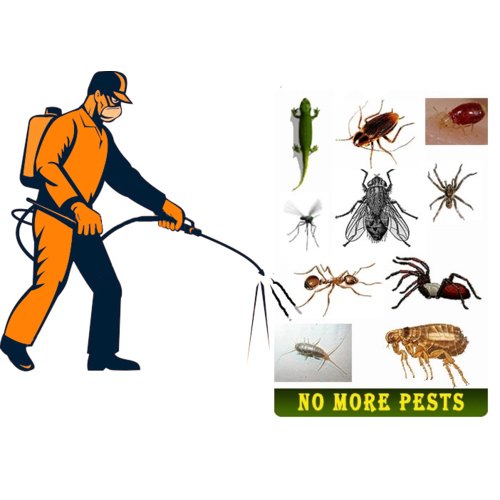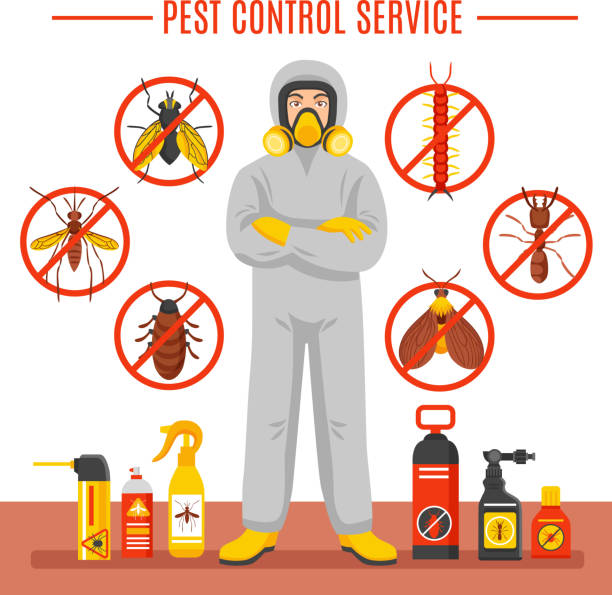Experienced Residential and Commercial Services by Pest Control Lockhart
Experienced Residential and Commercial Services by Pest Control Lockhart
Blog Article
Exploring Infestation and Treatment Strategies on the planet of Parasite Control
The landscape of bug control includes a myriad of challenges, particularly as problems of typical home bugs remain to advance. Comprehending the actions and reproductive patterns of these annoyances is crucial for creating efficient therapy techniques. By incorporating preventive actions with advanced administration methods, such as Integrated Insect Management (IPM), house owners can better secure their environments. The effectiveness of these approaches may differ substantially based on certain conditions. What underlying elements add to the success or failure of these methods in various settings?

Typical Family Pests
When it involves managing our space, recognizing common family parasites is important. These pests not just disrupt our convenience but can also present health and wellness threats and damages building. One of the most widespread family pests include ants, roaches, rodents, termites, and bed pests.
Ants, frequently seen foraging in kitchen areas, can pollute food and develop large nests. Rodents, consisting of mice and rats, can trigger structural damage and carry diseases like hantavirus and salmonella.
Recognizing the indicators of these bugs, such as droppings, nests, or bite marks, is necessary for early treatment (Pest Control Lockhart). Appropriate sanitation techniques, sealing entrance factors, and preserving a clutter-free atmosphere are effective preventative steps. By determining these common family bugs and recognizing their habits, homeowners can take proactive actions to mitigate problems, ensuring a healthier living environment
Recognizing Insect Infestations
Insect invasions can intensify promptly, transforming a small inconvenience right into a substantial trouble if not resolved without delay. Comprehending the nature of these problems is vital for reliable administration. Parasites can attack domestic and commercial areas for various reasons, consisting of the look for food, shelter, or breeding grounds. Common aspects adding to invasions include bad hygiene, architectural vulnerabilities, and seasonal changes that drive insects inside.
Recognizing the sort of bug is crucial, as various species show varied behaviors and reproductive rates. Rodents may establish nests in hidden locations while insects like cockroaches prosper in wet environments. Early detection typically rests on recognizing indications such as droppings, munch marks, or uncommon noises, which can indicate an issue prior to it comes to be extreme.
Warm, moist environments can help with the quick growth of bug populaces, while adjustments in landscape design or building can accidentally produce conducive atmospheres. An educated technique to recognizing these characteristics lays the foundation for efficient insect monitoring strategies in the future.
Therapy Techniques and Strategies
Effective therapy techniques and strategies are essential for mitigating insect infestations and restoring a risk-free environment. A diverse method is typically best, incorporating chemical, biological, and mechanical strategies customized to the certain bug and the extent of the infestation.
Chemical therapies consist of using insecticides and herbicides, which can effectively eliminate pests. Appropriate application and adherence to security standards are critical to lessen dangers to people and non-target microorganisms. Integrated Pest Management (IPM) encourages the cautious use chemicals as a last option, relying rather on monitoring and limit degrees to determine intervention requirements.
Organic control techniques involve introducing natural predators or parasites to reduce insect populaces. This method is progressively preferred, particularly in agricultural read the article setups, as it promotes environmental sustainability.
Mechanical approaches, such as catches and barriers, provide instant alleviation from bugs without introducing chemicals. Choices consist of sticky traps for bugs or physical obstacles for rodents.
Inevitably, the choice of treatment method should consider the particular pest, the environment, and potential effects on human health and wellness and environments. A well balanced combination of these methods can properly handle problems while promoting lasting insect control options.
Preventive Steps for Homes
Proactively resolving bug problems before they rise is essential for maintaining a healthy home setting (Pest Control Lockhart). Carrying out reliable safety nets web can substantially reduce the chance of problems, inevitably guarding both your building and health

Correct landscaping additionally plays an essential role in prevention. Keeping hedges and trees trimmed away from your home lowers the possibilities of parasites discovering their means inside your home. Ensure that drainage systems are operating efficiently to stop standing water, which can draw in mosquitoes and various other insects.
Finally, routine inspections are recommended. Regularly looking for indicators of bug activity enables early treatment. By embracing these precautionary measures, homeowners can develop an atmosphere that is less congenial to pests, thus improving their general lifestyle and decreasing the need for comprehensive bug control treatments.
Business Pest Control Techniques
A comprehensive method to commercial insect control is vital for companies intending to maintain a safe and sanitary environment. Effective methods include a mix of routine inspections, worker training, and the application of Integrated Pest Monitoring (IPM) practices.
Routine examinations make it possible for very early detection of bug task, permitting timely treatment. Organizations should create a routine timetable for these assessments, concentrating on risky areas such as kitchen areas, storeroom, and waste disposal sites. Staff member training is similarly important; personnel should be enlightened on the indicators of pest infestations and the value of reporting them quickly.
Implementing IPM practices helps alleviate pest issues sustainably. This consists of environment modification, such as sealing entrance points and minimizing mess, as well as utilizing natural deterrents prior to considering chemical treatments.

Furthermore, working together with an accredited bug control provider makes certain accessibility to specialist knowledge and innovative treatment choices. This partnership can cause personalized parasite control intends tailored to the specific requirements of the company, minimizing threats and boosting total efficiency. Inevitably, a proactive and enlightened technique fosters a pest-free setting, securing both public health and organization credibility.
Final Thought
In conclusion, effective parasite additional hints control demands a thorough understanding of common house parasites and their behaviors, coupled with targeted therapy approaches. Applying precautionary steps alongside therapy strategies such as Integrated Insect Management and biological control boosts the capability to reduce infestations.
Report this page